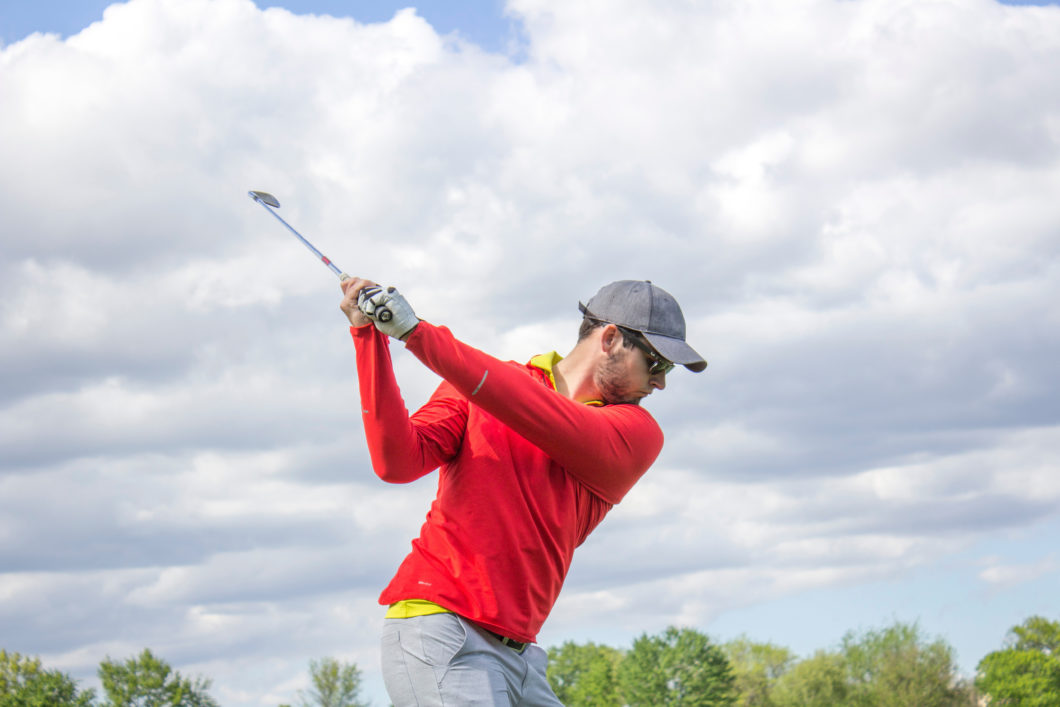
With beautiful summer days, golf season is in full swing. This blog will walk you through tips and tricks to help you achieve that perfect swing, and reduce your chance at injury.
The perfect golf swing is a single fluid motion that moves throughout the entire body. The goal is to hit the ball with maximum efficiency and minimal effort. To achieve this feat, golfers spend hours practicing on the range, and must focus on 3 key factors: Core strength, mobility and conditioning.
CORE STRENGTH
The golf swing is a strong rotational force that travels through the body, particularly the back, and into the golf ball; which sends it soaring! This rotation is seen within the thoracic spine, and can cause compression and torsion within the back which is a risk of injury, especially if stiff. A strong core effectively translates power into the swing, and greatly reduces the chance of back injury. A registered physiotherapist can suggest and demonstrate specific core strength, and stability exercises needed to help increase core strength. Thereby improving your golf swing while protecting your back 1.
MOBILITY
As a very technical movement, the golf swing requires a vast range of motion. The movement travels from the ankles through the knees to the hips, spine, elbows, shoulders and wrists. Additionally, golf is an asymmetrical sport that requires different movements and actions from dominant and subservient limbs. A right handed golfer needs more external rotation in the right shoulder and more adduction in the left during the swing, while the left handed needs the opposite. Having a good range of motion in these areas helps both technique and reduces excess forces to other areas of the body during the swing which may result in injury. A registered physiotherapist can help assess your overall mobility, and identify problem points. We can provide a treatment plan to help establish a fluid motion in your swing 1.
CONDITIONING
Hours on the range, sloppy technique in the back nine, and feeling tired or sore after a game could mean your muscles are not conditioned to handle the amount of stress. Body conditioning refers to exercises that increase your strength, speed, endurance or any other physical attribute. An overall strength and conditioning program prescribed by your physiotherapist improves muscle strength and endurance. The result is a consistent swing from the first tee to the 18th hole, and reduces the risk of injury due to tired muscles 2.
TIPS ON THE COURSE
Warm up — dynamic stretching is stretching in motion, and very important before your first swing. Start with slow and controlled swings with a higher lofted club, then gradually increase to regular speed with a driver.
Swing speed — Do not swing at full force. This will hurt your swing technique and put you at risk of injury.
Know your limit — Don’t be a hero and play through the pain. Listen to your body. If your back or shoulders start to ache during the course, and isn’t getting better, don’t play through it. Ending your round short will save you from over exerting yourself 3.
COMMON INJURIES ON THE COURSE
Improper form due to fatigue or experience can result in an unbalanced force distribution and ultimately lead to golfer’s elbow (tendonitis of the medial elbow), and shoulder injuries 2. In addition, as previously mentioned, golfers may strain their back due to torsion and weak core strength. Preventative measures to ensure proper form and technique is available at our clinic. Registered physiotherapists are able to evaluate your body, make suggestions for improvement, and leave you a fluid golfer.
If you have questions about conditioning, want to have a physiotherapist assess your range of motion, or have a golf injury call us today!